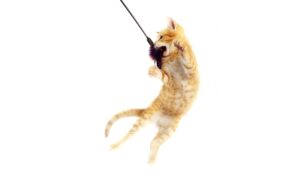The Year of Reptile Products
John Mack //February 5, 2020//
You have likely already taken stock of the past year in the hopes of finding out what’s working best for your store and what improvements can be made this year. With so many options out there, finding sure-fire “wins” for your store becomes a job in and of itself.
The popularity of reptiles and amphibians within the pet trade is simply on fire right now, with reptile shows seemingly held every single weekend. Here in Ohio, we have over 25 separate shows per year, while Texas holds upward of 40 shows! These shows are consistently packed with attendees, with reptile enthusiasts coming from all corners to get a glimpse of the latest morphs and species, and the gear to keep them happy and healthy.
Over the years, we’ve worked with a number of larger chains, some who had never carried reptiles in the past. As those stores expanded their stock to include reptiles, their food and their necessary care supplies, they’ve seen a huge area of gain for their individual stores across the board. In many of these cases, their largest areas of growth have come directly from the sale of reptiles and their subsidiary supplies.
It’s in those subsidiary supplies that a store new to the reptile category can really begin making inroads into the subsector. One of the greatest advantages pet-specific stores have over big-box stores lies in the specialty of animal food: Many of these stores quite simply do not carry the sort of food, caging and other materials necessary to maintain a snake, frog or turtle.
In taking advantage of this gap in the market, carrying reptile supplies allows you to tap into a vast array of recurring sales. In the case of a reptile that eats crickets or mealworms, a combination of quality customer service and a suitable stock of food can ensure repeat customer visits upward of 50 times per year. This, compared to a cat or dog, whose food can be found in any nearby grocery store. If a pet owner comes into your store every other week for mealworms, that customer will be walking through your door 26 times each year!
The importance of these repeat visits becomes even more magnified when we consider the number of pets owned by an average reptile owner. Our research shows that reptile owners are more likely than owners of any other variety of pet to have multiple pets within their household, whether of the same type or other types. Each time that reptile owner walks into your store to pick up a box of crickets or a pack of mealworms, they become increasingly likely to pick up a bag of cat litter, a jar of fish flakes or a new leash for their puppy. These additional sales would not be possible, if not for the ability to offer something that a big-box store doesn’t usually have.
For those stores just dipping their toe into the waters of the reptile trade, use simple food products—crickets, mealworms and specialty greens—as an in-road to accessing the reptile market. Alternatively, if you already have a freezer in your store, consider stocking pre-frozen mice or rats, suitable for snake owners. These types of food take little in the way of preparation and keeping, but provide avenues for the continual recurring sales that every store thrives on.
Once you’ve begun to establish a market for reptile owners in your store, consider adding a variety of caging products. Provide a section specifically for reptile enclosures, lighting, substrate and other necessary materials, preferably close to you reptile food station. Doing so begins to establish a one-stop shop for all your reptile-owning patrons. A loyal customer will know exactly what part of the store they need to go to for their reptile wares, while a new customer will find reptile supplies as an easy-to-find area within your store’s layout.
Of course, if you decide to move into the actual sale of reptiles, rather than just food and supplies, there are a number of great, easy-to-care-for animals available both for the novice customer and the newly carrying store. Consider the numerous varieties of lizards, geckos and easy-to-care-for colubrid snakes (including king and corn snakes). Each of these comes in a variety of colors and morphs, making them appealing to both new reptile owners and those looking for something new.
There’s no better area for growth and profitability than in reptiles. They can’t be just dismissed as a fad; as a pet, they’re here to stay. Every indicator is showing reptiles as the hottest pet category; it’s up to you to take advantage of it.
Author Bio: John Mack is the founder and CEO of Reptiles by Mack. He is also the vice-chair for PIJAC and is on the PIJAC Zoonosis Diseases Committee. His Ohio-based company is widely recognized as one of the largest reptile breeders and suppliers in the USA today.



















